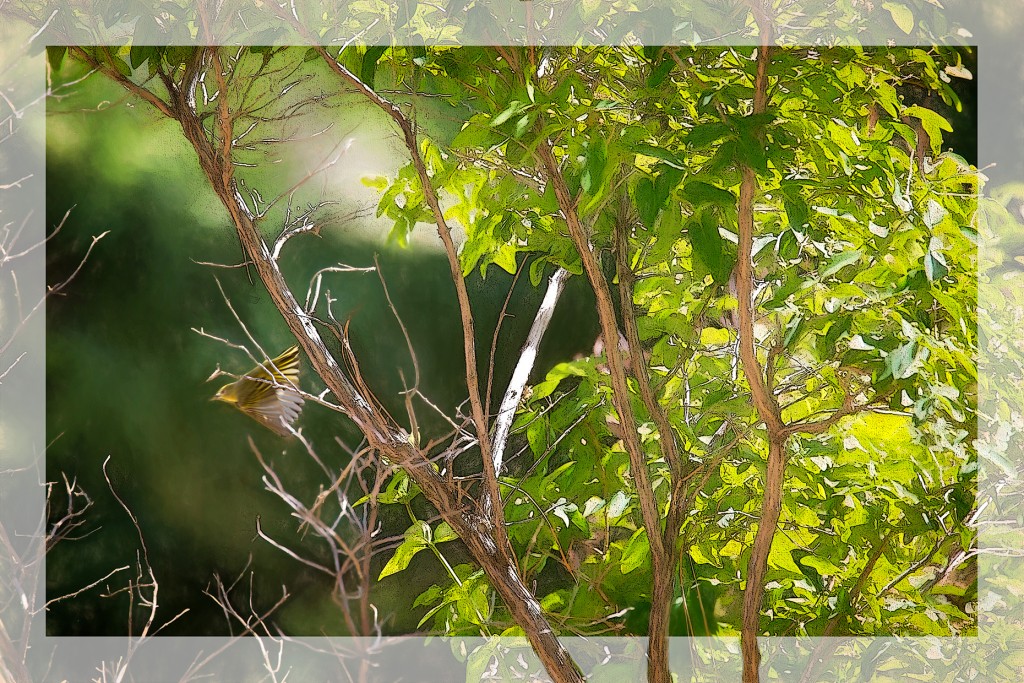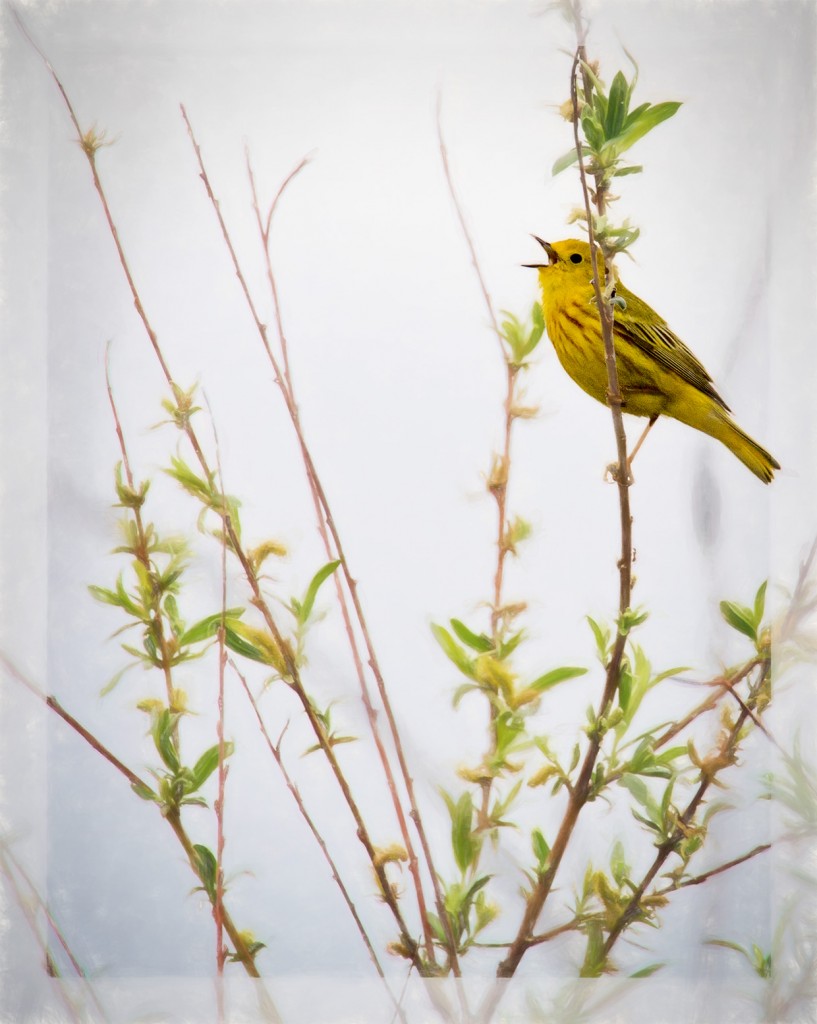Since the more familiar birds were absent, I spent most of my time at Malheur trying to photograph song birds which are generally much harder to photograph than larger birds since smaller birds survive by hiding in foliage and constantly being on the move. Luckily, I like the challenge of getting a good shot — or at least a recognizable shot of these kinds of birds.
Auto-focus is definitely a blessing to a bird photographer, but that’s not always a case with small birds hiding in foliage. The camera is just as apt to focus on a leaf as on the bird, and it has a hard time focusing on a fast-moving bird.
I’ll have to admit, though, that the camera saw this Yellow Warbler
better than I did with my naked eye. In fact, I couldn’t identify it until I looked at the shot on my computer.
I probably should have guessed it was a yellow warbler, though, because there were a lot of them at Malheur and most of them flew away as soon as I pointed a lens at them,
though occasionally I got lucky and found one so focused on attracting a mate or claiming its territory that it totally ignored me.
There are a lot of small birds at Malhuer when you’re focusing on seeing them. This flycatcher, a Western Wood-Pewee, I think, was totally indifferent to me, returning to the same branch after each attempt to catch an insect.
You also see a lot of birds at Malheur sitting on fence lines since that’s the highest point around. I first thought this was a Black Phoebe, but after a closer look I think it is an Eastern Kingbird,
a bird I very seldom see and might not recognize with a birding book.





